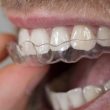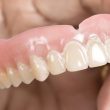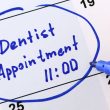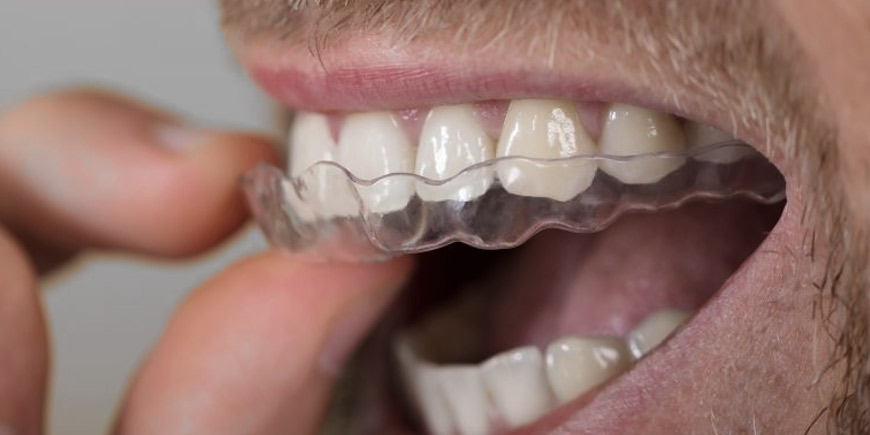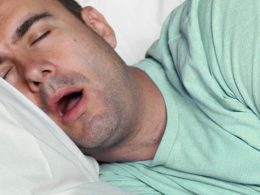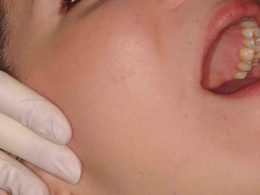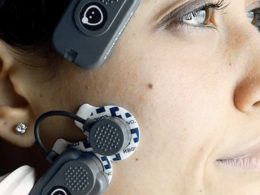Table of Contents
Treatment of occlusal-related disorders is often a challenge for both the Dentist and the patient. These disorders are often difficult to diagnose, as their symptoms are often so diverse. The design and manufacture of an occlusal splint can be considered a great example of the art and science behind Dentistry.
Once the causes of occlusion-related disorders are identified, this non-invasive and reversible therapy provides diagnostic information and great symptom relief, without the complications that often accompany other approaches of care such as surgery and prolonged pharmacotherapy.
The goal of this post is to familiarize patients with the basic principles of bite plates and occlusal splint therapy for treating bruxism, malocclusions, temporomandibular disorders (TMDs) and some forms of headache. Mouth guards intended for sports practice and those of stock or prefabricated that are sold in stores and pharmacies, are outside the intention of this exhibition.
What Is Occlusal Splint Therapy?
Occlusal splint therapy can be defined as the art and science of restoring the neuromuscular harmony of the masticatory system through removable appliances, which seek to counteract the mechanical damage caused by parafunctional forces. A properly constructed splint provides what we call a mutually protected occlusion.
What Types of Splints Are Available?
The types of splints or mouth guards currently employed in occlusal splint therapy include permissive, nonpermissive, hydrostatic and soft rubber (silicone) splints. The permissive splints allow the teeth to glide unimpeded over the biting or contact surface. These include bite planes (anterior deprogrammer, Lucia jig and anterior jig) and stabilization splints (Tanner, of centric relation, flat plane and of superior repositioning).
The nonpermissive splints have ramps or indentations that limit the movement of the mandible. Examples include the anterior repositioning appliance (ARA) and the mandibular orthotic repositioning appliance (MORA).
Soft rubber splints and hydrostatic splints (Aqualizer and Jumar Corp type) function by separating the teeth. However, they do not provide the characteristics necessary for successful splint therapy. These splints can exacerbate bruxism, possibly due to premature posterior contacts, related to the fact that these splints cannot be dynamiced or balanced.
How Do Splints Work?
Splints provide diagnostic information, allow muscles in spasm to relax, protect the teeth and jaws from the adverse effects of bruxism and normalize periodontal ligament proprioception. These devices can also favor repositioning of the condyles and jaws into centric relation (CR).
Centric relation is defined as that relationship of the mandible to the maxilla in which the disc/condyle assembly is correctly aligned, in its most superior position against the articular eminence of the temporal bone, regardless of dental relationship or vertical dimension. That is, it is the position of maximum mandibular equilibrium, with a perfect balance between joints, elevator muscles and depressor muscles.
Occlusal splints provide diagnostic information in many ways. The Restorative Dentist can determine the envelope of function, potential neutral zone impingements, parafunctional habits and anterior guidance requirements, as well as obtain information about vertical dimension from patients who wear a splint. A study of patients with nocturnal bruxism revealed that 13% exhibited isometric clenching, 71% exhibited bilateral clenching, 13% exhibited unilateral excursion and 3% exhibited protrusive movement.
The treating clinician can predict from this information, that a large percentage of patients requiring restorative treatment may exhibit lateral parafunctional forces that could damage the natural and prosthetic dentition. Cusp shapes, sizes, angulations and depths can be evaluated and properly designed if this information is available prior to treatment.
Temporomandibular (TM) condition can also be evaluated and a functional diagnosis verified or ruled out. An example is the individual diagnosed with a muscular TM joint that does not achieve total muscle relaxation with treatment. This can indicate a more advanced joint disorder than originally diagnosed. In many cases, we consider splint wear mandatory prior to extensive restorative therapy.
Muscle Relaxation
The literature has shown that dental interferences in the closing arch overload the lateral pterygoid muscles, interferences of the posterior teeth during excursive mandibular movements cause hyperactivity of the depressor muscles; and conversely, that the elimination of posterior excursive contacts through anterior guidance, significantly reduces the hyperactivity of the elevator muscles. Even small (50 micrometers) occlusal interferences can initiate changes in coordinated muscle activity.
Headache is observed in many temporomandibular disorders (TMDs) patients. The efficacy of splinting therapy in reducing headache, neck pain and muscle hyperactivity; it is very well documented.
Occlusal splints promote muscle relaxation by providing a platform for the teeth that allows for a more even distribution of tooth contacts, immediate disocclusion of posterior teeth in all movements (with anterior guidance) and reduction of stress on the joint. This neuromuscular harmony provides great well-being and optimal occlusal function.
Protecting Teeth and Jaws from Bruxism
Bruxism has been defined as the grinding or clenching of teeth at other times than for the mastication of food. Certain authors have suggested it is only a nocturnal activity. A CR well balanced splint can provide protection from the potentially adverse effects of this parafunctional activity, mainly fractures and severe dental wear.
Studies investigating the incidence of bruxism have reported a prevalence ranging from 6.5% to 88%. The forces generated during habit can be up to six times the maximum force generated by normal chewing, which is about 162 pounds per square inch.
Patients with bruxism must be identified and treated early. Diagnosis involves examination of the teeth, supporting tissues, muscles of mastication, and temporomandibular joints. The signs and symptoms of bruxism should be counteracted with a balanced RC night splint, before and after any restorative intervention.
It is important to remember that splints do not prevent or cure bruxism, but rather distribute forces throughout the entire masticatory system. These devices can decrease the frequency but not the intensity of the bruxing episodes.
Normalizing Periodontal Ligament Proprioception
The attachment of a tooth to the jawbone is via the periodontal ligament. Contained within this collagenous structure are sensors (proprioceptive fibers) that perceive forces. The stimuli received by the ligament are transmitted through nerve fibers to the central nervous system, triggering muscle patterns that protect the teeth from overload, but that in turn; cause hypertonicity, spasms and joint pathologies.
An occlusal splint functions to dissipate the forces placed on individual teeth by utilizing a larger surface area covering all teeth in the arch. Once fabricated, a splint must be continually adjusted to re-establish equal contact, balance the load and promote muscle coordination.
Allowing Condylar Seating in Centric Relation (CR)
The centric relationship should be the starting point for determining the relationships between teeth, discs, bones, ligaments and muscles. It is achieved that the condyle/disc set is seated in CR when the upper belly of the lateral pterygoid muscle reaches its maximum extension with only a minimal contraction, which characterizes tonic activity as opposed to any type of muscle hyperactivity.
The temporomandibular joints are load bearing, particularly during parafunctional activities and vigorous chewing. During loading, the elevator muscles (primarily the temporalis and masseter) can exert maximal force with a fully relaxed lateral pterygoid and a physiologically localized disc. When the lateral pterygoid is activated to hyperactivity through occlusal stimuli, the disc is stretched anteriorly and medially toward the origin of the muscle, resulting in displacement. In this case, the disc, the condylar head, the ligaments and the muscle are subjected to excessive load and are susceptible to damage. Chronic and acute overloading of the condyle/disc assembly when they are not in a normal physiological position contributes greatly to the development of temporomandibular disorders.
A properly balanced splint results in an occlusion characterized by the relaxed position of the elevator muscles, allowing the articular disc to assume an anterior-superior position over the condylar head. Splint therapy should use centric relation as the physiologic treatment position. This is contraindicated in situations where the inflammation of the joint causes a lot of pain. The condyles may need to be in an anterior-inferior joint position until the swelling subsides and centric relation can be achieved.
Which Type of Splint Should Be Used and When?
The type of splint utilized is dependent on the diagnosis and the evolutionary state of the disorder. A careful medical/dental history along with a comprehensive examination is necessary for all patients, but especially in those with bruxism, facial pain or a history of temporomandibular disorders.
1- Splints for Bruxism and Incipient Malocclusions
If the patient reports bruxism and headaches but no temporomandibular disorders, the use at night of a full-coverage splint, in which acrylic covers an entire arch of teeth, is often adequate to protect the teeth. Muscle relaxation is an added benefit that often relieves or eliminates tension headaches.
The choice of the arch for which the splint is fabricated is dictated by the type of bruxism habit. If the patient clenches isometrically, a full-coverage maxillary guard with all of the teeth in contact is appropriate. In isometric clenching, the maxillary anterior teeth would not be covered by a mandibular splint, and since no significant movement occurs, the forces would not be adequately distributed with this type of device.
If the patient demonstrates parafunctional movement in lateral and protrusive directions, a splint for the lower teeth will be the most effective. With parafunctional movement laterally, a mandibular splint that does not touch all of the anterior teeth is acceptable (it must engage the canines as a guide, but extending it to the incisors would be uncomfortable and unsightly). Pressure is not transferred to only the posterior teeth because movement is so dynamic. If there is a question regarding the extent of mandibular night-time movement, a maxillary splint is preferred.
The occlusal thickness of the splint has been addressed in the literature. These studies suggest that a minimum of a 4-mm increase in vertical dimension is necessary to protect bruxing patients. If the patient is wearing a splint 4 mm in thickness and still experiences muscular soreness, headache and/or facial muscle tightness immediately after waking; splint thickness should be increased incrementally until symptoms disappear, indicating that the appropriate splint thickness has been determined.
2- Splints for Muscular Hyperactivity
For symptomatic patients without joint commitment, the selection of a splint is dependent on the diagnosis of the case. The use of medications and other treatment approaches, is beyond the scope of this post.
Bite plane therapy may be used when a muscle disorder is suspected. Muscle disorders are initiated by hyperocclusion, and bite planes separate the teeth, allowing the muscles to relax. These appliances should not be worn for longer than 24 to 48 hours continually, as they cover mainly the maxillary anterior teeth and supra-eruption of posterior teeth could occur from lack of contact.
Full-coverage stabilization splints, which are flat plane splints covering the entire dental arch, are also acceptable, and may be the treatment of choice for patients with a doubtful diagnosis. In general, muscle disorders are effectively treated with appropriate splint therapy (bite planes and stabilization appliances).
3- Splints for Incipient Temporomandibular Disorders
Combination muscle and disc disorders are identified by joints that click or pop, and muscle symptoms are also present. These disorders tend to be more chronic in nature (unless there has been an acute exacerbation) and are associated with more damage. Stabilization splints are the treatment of choice, as they provide long-term wear that is usually needed.
They also cover the entire dental arch, ensuring that the covered teeth do not move. They must be worn continually for 24 hours (except when eating) for as long as required to eliminate muscle, disc, ligament and tooth symptoms. Three to six months of wear is often required. These disorders may be reversible if detected relatively early and treated appropriately.
4- Splints for Advanced Temporomandibular Disorders
Advanced disc and muscle disorders are identified in patients who experience a long history of jaw locking and/or noises, instability, painful joints and, sometimes, increasing pain with splint wear. Patients with acute trauma may require an anterior repositioning appliance for 7 to 10 days to keep the condyle away from the retrodiscal tissues, so inflammation can subside.
Later, stabilization splints are the treatment of choice, and must be balanced to accommodate the specific needs of the patient (many patients require shallow cuspid guidance in lateral or protrusive movements to eliminate joint clicking). Splints may need to be worn for 6 months to 2 years, depending on the patient. These disorders are usually not reversible, but with treatment, patients can experience amelioration of symptoms.
5- Post Prosthetic Rehabilitation Splints
These protectors are essential to guarantee the integrity and longevity of dental implants, veneers and extensive ceramic restorations (bilateral or of more than 3 or 4 units).
Due to the great susceptibility of implants and porcelains to occlusal overloads and parafunctional habits, it is imperative to prevent the appearance and/or recurrence of any occlusal pathology that could destroy and end the useful life of the rehabilitation.
This type of splints are indicated for life, only to sleep, but 365 days a year.
“Making a Good Clinical Diagnosis and Possessing Deep Knowledge of Occlusion, Are Indispensable Requirements to Select the Most Indicated Type of Splint for Each Particular Case”.
DENTAL TIP
How Often Should Splints Be Adjusted?
In a recent study, occlusal changes (indentations) in splints were observed within 2 weeks of installation in 61% of people. This suggests that more than half of the patients need subsequent visits before that time period.
Our usual protocol includes adjustments at 24 hours, 3 days, 7 days, 14 days, 21 days and 1 month. When no change in the splint is observed at fitting appointments and symptoms improve, the intervals between adjustments can be extended and the patient is instructed to call for an appointment if symptoms reappear.
Subsequently, the splints must be continuously monitored and adjusted (at least every 6 months) to maintain balanced contacts in all teeth, with immediate disocclusion of the posterior pieces in all mandibular movements. When muscle relaxation is achieved and/or inflammation subsides, the position of the teeth in the splint will change. Neuromuscular harmony often returns when readjustment to centric relation position is achieved. If interferences in the splint are continuously eliminated through centric rebalancing, the patient will obtain lasting relief from his symptoms.
The Smile of Your Dreams Awaits You in Venezuela!
A cost saving alternative to your local dental care.
DENTAL VIP offers dental services in Caracas to patients from North America, Europe and the Caribbean.
We designed all our services to meet the special needs and expectations of our guests travelling for treatment:
- 50-70% lower prices.
- Volume discounts.
- Free consultation (X-ray, dental quote and transport).
- Extended guarantee packages for all treatments.
- Shorter treatment times and no waiting list.
- Free all time patient support.
- Travel and hotel assistance.
- After-care services.
We wish to ensure that your visit not only saves you money but you receive the best care for your dental needs. DENTAL VIP is dedicated to provide value for your money in your dental treatment, travel, and stay in Caracas.
Do not compromise on quality for the price, visit us in Caracas for your treatment and allow yourself the best. Do not settle for awkward removable dentures, low-end dental implants, or only temporary solutions.
Do not waste any more time, contact us right now!


